Introduction
In the rapidly evolving digital landscape, the distinction between traditional websites and web applications has become increasingly significant. Web applications are not merely static pages; they are dynamic platforms designed to engage users through interactive functionalities and complex processes.
As businesses strive to enhance user experiences and drive engagement, understanding the nuances of web applications—ranging from their technological frameworks to the essential stages of development—becomes crucial.
This article delves into the key aspects of creating effective web applications, from ideation and market research to technology stack selection and post-launch maintenance, providing a comprehensive guide for developers aiming to succeed in this competitive arena.
Understanding Web Applications: Definitions and Key Differences
Web solutions represent a new paradigm in software delivery, functioning as dynamic programs that operate on a web server and are accessible via a web browser. In contrast to conventional websites, which mainly deliver static content, web platforms provide a diverse range of interactive features and participant interactions. Grasping the differences between these two formats is crucial for developers looking to build high-performance software.
- Interactivity: Web-based platforms enable interactions, allowing tasks such as filling out forms, making purchases, and utilizing various online tools. In contrast, traditional websites often provide a one-directional flow of information, limiting audience engagement. Approximately 61% of online consumers in the U.S. shop after reading recommendations on a blog, highlighting the importance of interactivity and engagement in web platforms.
- Functionality: The capabilities of web platforms extend far beyond those of traditional websites. They can manage complex processes, including data processing and authentication, which are usually beyond the scope of static sites. Significantly, 42% of individuals leave websites because of inadequate functionality, highlighting the importance of effective design in keeping visitors.
- Technology: Web platforms utilize advanced technologies such as AJAX, APIs, and databases, which enhance a smooth and responsive experience. Recent statistics highlight the importance of these distinctions: 65% of website traffic now comes from mobile devices, a trend that emphasizes the need for a responsive design in web platforms. Moreover, 94% of enterprises are affected by website design, emphasizing that effective design and interactivity are not merely preferences but essentials.
By understanding these distinctions, aspiring developers can better customize their strategies to develop web applications and implement effective web solutions, ultimately improving client satisfaction and business results. For further support, developers can reach out via phone or Skype for 24x7 assistance.
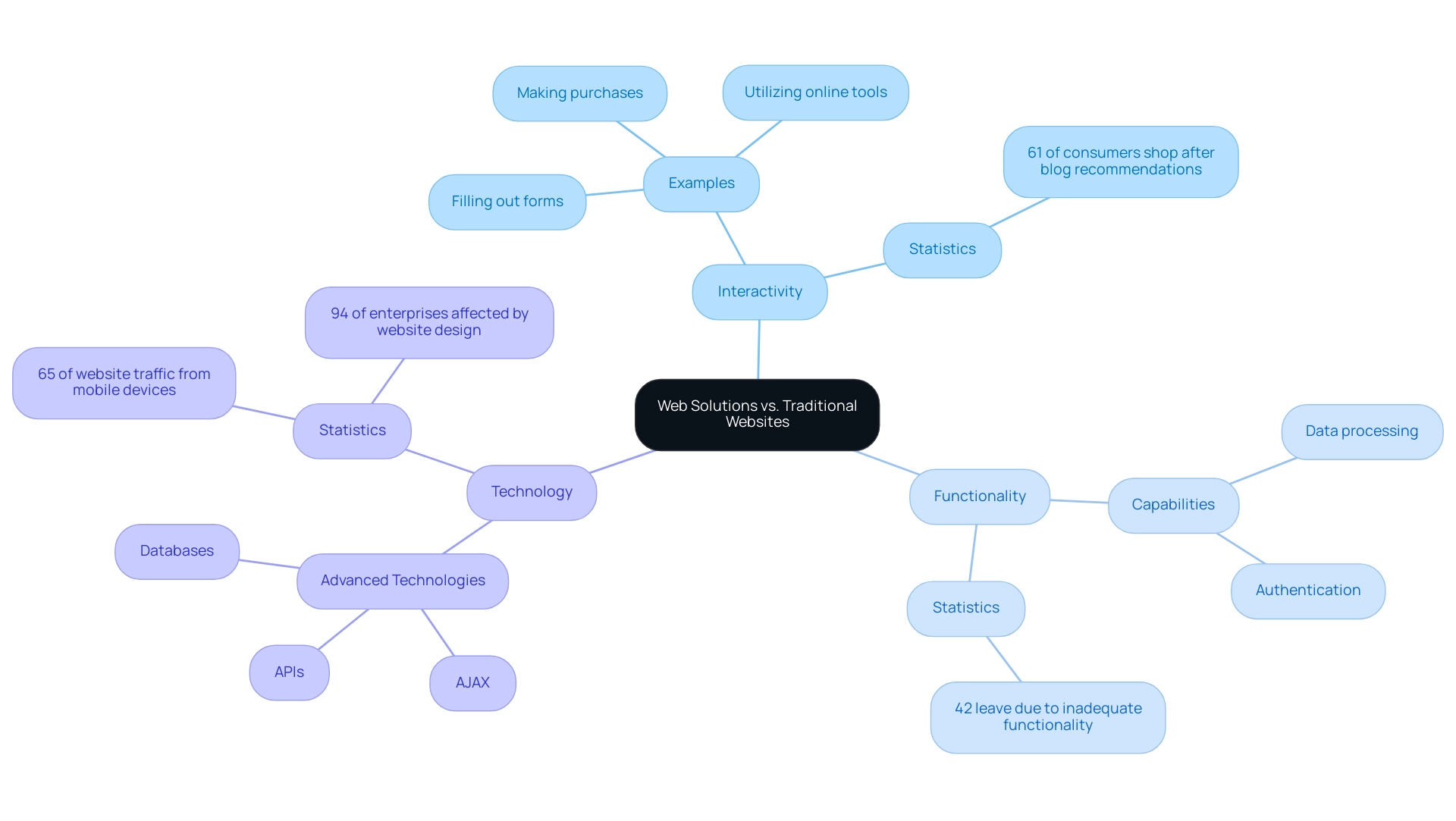
The Initial Stages: Ideation and Market Research
Commence the brainstorming process for your website by identifying obstacles encountered by individuals and how your solution can tackle these problems. A vital stage in this journey involves performing comprehensive market analysis to effectively confirm your concepts:
- Identify Your Target Audience: Clearly outline your program's audience, concentrating on their particular needs and preferences. Understanding demographics will assist in customizing features that connect with users.
- Analyze Competitors: Investigate current platforms within your niche to identify their strengths and weaknesses. This analysis will assist you in defining a distinctive value proposition for your web applications.
- Gather Feedback: Utilize surveys or interviews to collect insights from potential individuals regarding their preferences and pain points. Engaging directly with individuals will provide invaluable feedback that can inform your application's functionality and design.
With these steps, you will develop web applications that ensure alignment with real needs. Notably, as consumer behavior evolves due to technological advancements, leveraging insights from current market research becomes essential. For instance, data indicate that visitors are likely to stay 88% longer on websites that incorporate videos, highlighting the importance of engaging content.
Moreover, with 20% of web developers not utilizing AI technology, keeping up with advancements is essential for improving experience. Additionally, considering hiring web app developers in India can provide authentic services within budget, ensuring that your development process is both effective and cost-efficient. By implementing these proactive measures, you can develop web applications that not only satisfy client expectations but also distinguish themselves in a competitive environment.
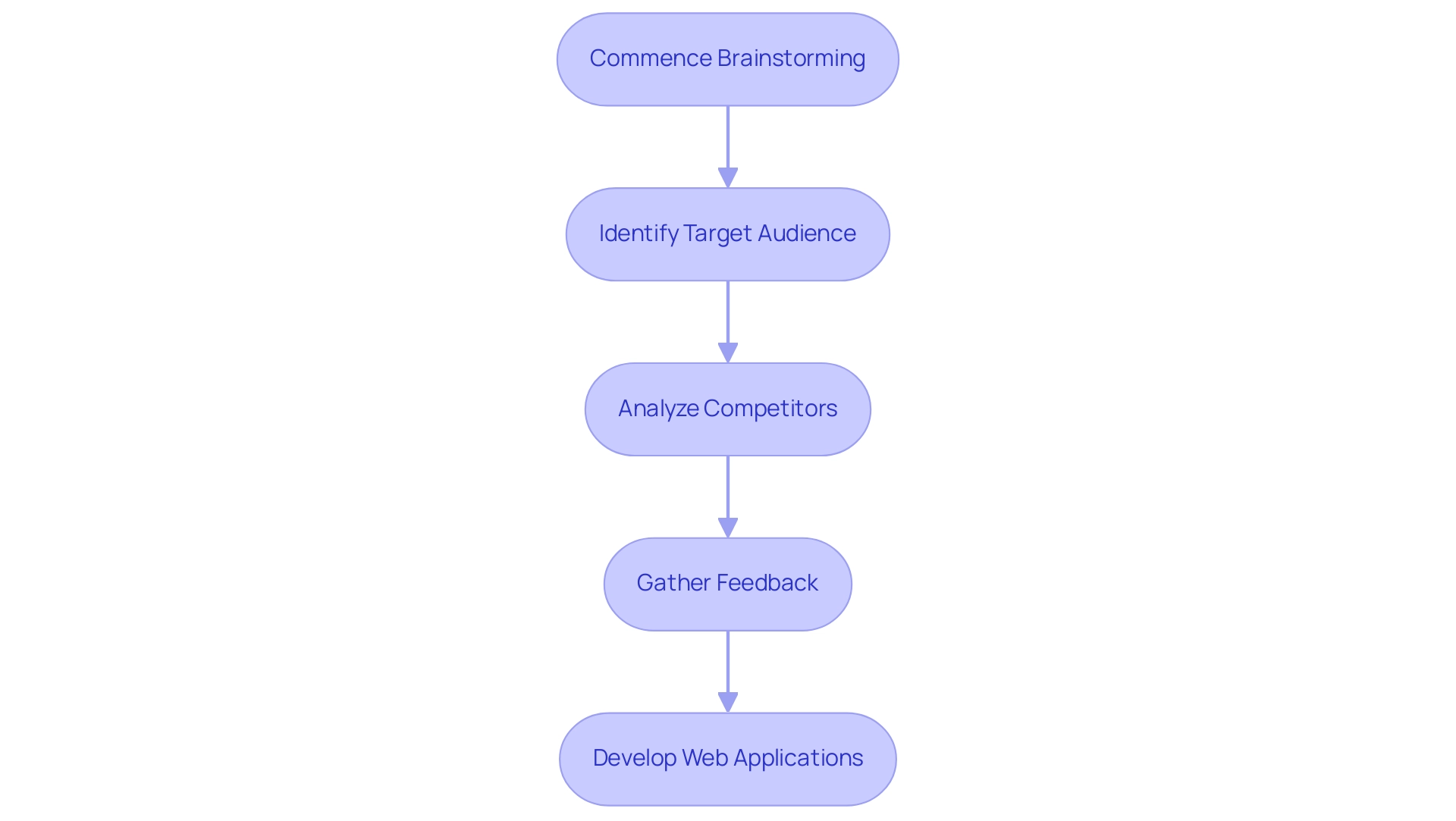
Choosing the Right Technology Stack: Frontend and Backend Development
When choosing a technology stack for web platforms, it is vital to consider various aspects to ensure optimal performance and usability:
-
Frontend Development: This layer is crucial as it affects interaction. Leading frameworks such as React, Angular, and Vue.js remain dominant choices in 2024, reflecting the preferences of developers. Recent statistics indicate that users learning to code express interest in trying an average of 12 programming languages next year, compared to 8 for professional developers, highlighting a growing enthusiasm for exploring various technologies. This trend highlights the significance of choosing a frontend framework that not only fulfills project requirements but also corresponds with your team’s expertise.
-
Backend Development: The backend manages server-side operations and is essential for performance. Popular options include Node.js, Django, and Ruby on Rails. When choosing a backend technology, consider key factors such as scalability, community support, and ease of integration with your database. Insights from industry experts suggest that a robust backend can significantly enhance software reliability. Additionally, 41% of ChatGPT participants have expressed interest in using GitHub Copilot next year, indicating a trend towards leveraging advanced tools for backend development.
-
Database: Selecting the right database is fundamental. Depending on your data structure and software requirements, you may choose between SQL databases like PostgreSQL or MySQL, and NoSQL options like MongoDB. The choice of database can influence performance, so it should be made based on thorough analysis and future scalability.
Ultimately, selecting the right technology stack is crucial for developing web applications that are not only robust but also scalable and maintainable, setting the foundation for successful user experiences. Please note that this summary is a subjective reflection based on personal projects and experiences, not global trends.
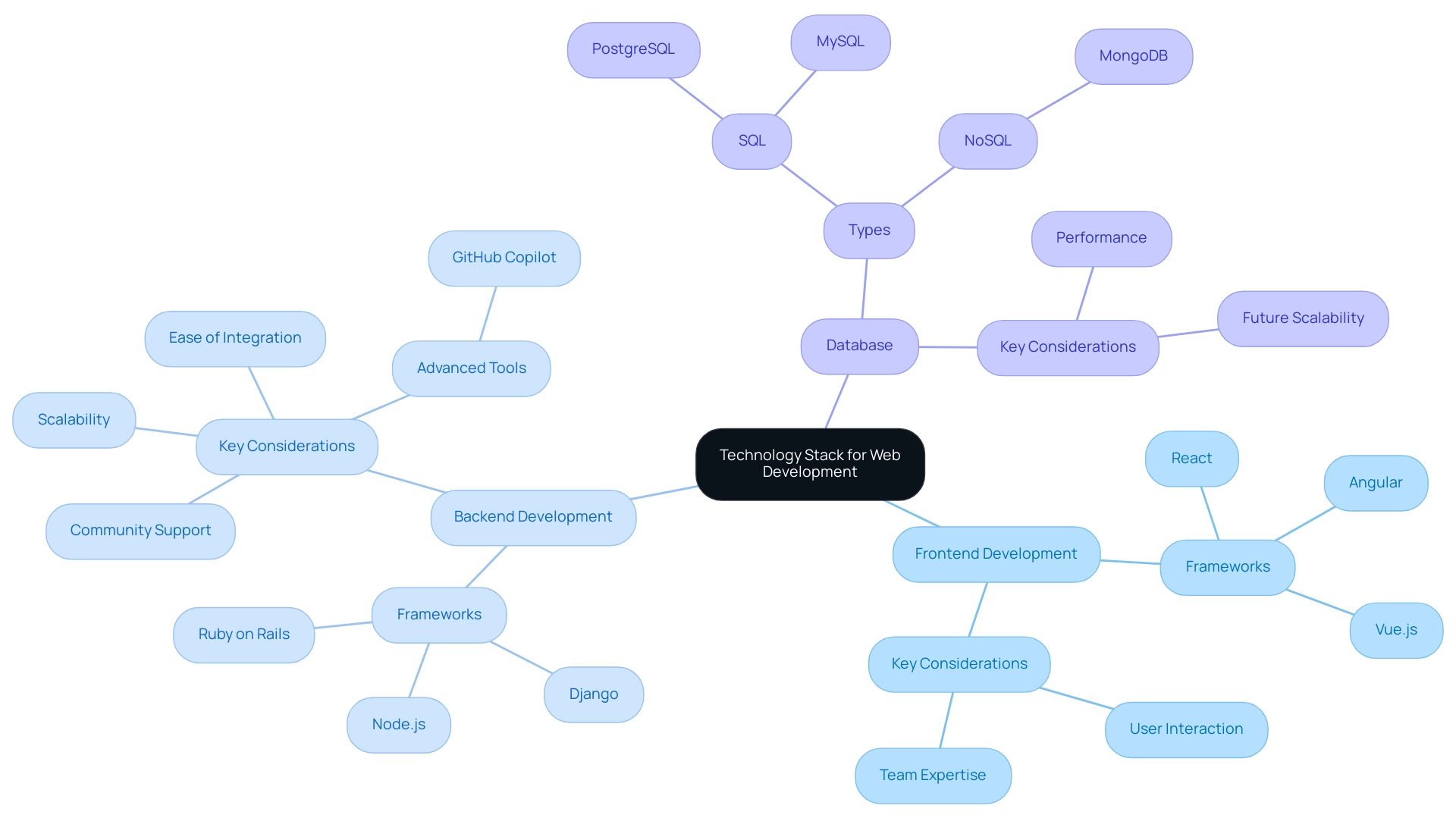
Testing and Deployment: Ensuring Quality and Success
Efficient evaluation for web platforms should include a range of methodologies to guarantee thorough coverage and strong functionality. Key testing types include:
- Unit Testing: This process involves evaluating individual components of the application to verify their functionality in isolation.
- Integration Testing: This stage ensures that various components of the system seamlessly work together, identifying any issues that may arise during interaction.
- User Acceptance Evaluation (UAE): This form of assessment verifies the software against user requirements and expectations, confirming that it meets the needs of its end-users.
Considering that 70% of developers express cybersecurity concerns during the development phase, it is essential to incorporate security evaluations into the overall assessment strategy to mitigate risks effectively.
Upon concluding the testing phase, meticulous preparation for deployment is crucial:
- Choose a Hosting Provider: Select a dependable hosting service tailored to your application's specific requirements, with popular options like AWS and Heroku offering scalable solutions.
- Deployment Pipeline: Implement a Continuous Integration/Continuous Deployment (CI/CD) pipeline to automate both evaluation and deployment processes, enhancing efficiency and reducing errors. Notably, less than 50% of companies currently utilize AI capabilities for test automation, indicating a significant opportunity for improved efficiency and competitiveness.
- Monitor Performance: After deployment, utilize analytics tools to track software performance and participant engagement, allowing for ongoing optimization.
As mentioned in recent reports, 52% of IT teams have raised their QA budgets due to the growing number of software releases, emphasizing the significance of improved evaluation methodologies. As Assico Technologies stated, "Thank you Synergy Top, Inc for the Amazing insights and helpful data on the latest software development trends!" Thorough testing and careful deployment not only enhance the quality of your software but also significantly improve experience and retention, making it imperative to develop web applications effectively.
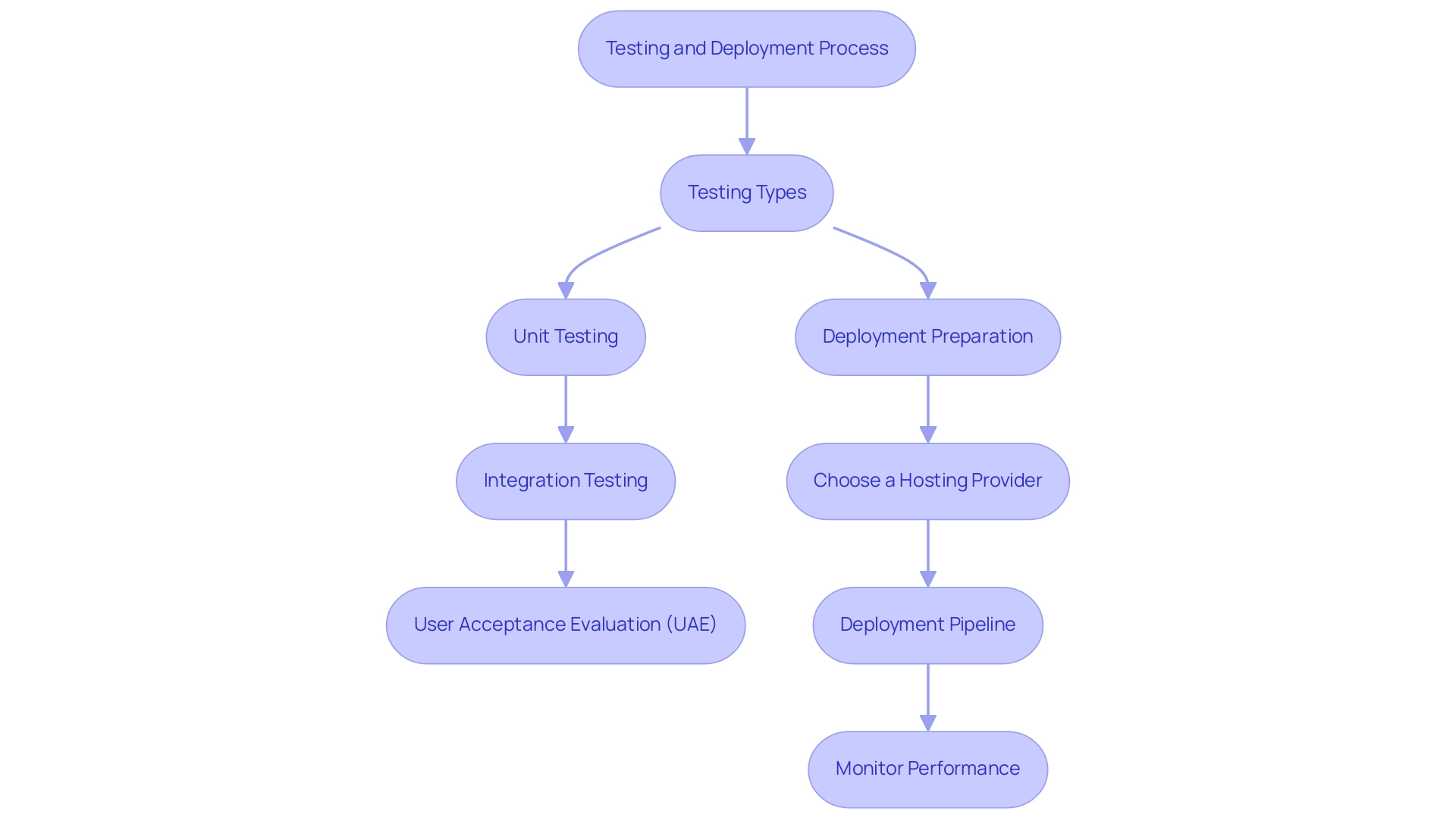
Post-Launch: Maintenance, Updates, and User Feedback
Post-launch success depends on several critical strategies that ensure your website remains robust and user-centric. First and foremost, Regular Maintenance is essential. Schedule routine performance checks, security updates, and bug fixes to preemptively address any issues that could hinder the experience.
Notably, statistics show that 88% of manufacturing companies prioritize preventive maintenance, a practice that can be mirrored in developing web applications to ensure longevity and reliability. Implementing tools such as surveys or feedback forms enables you to capture valuable insights directly from your audience. This input is crucial; as Peter Rojas, co-founder of Engadget and Gizmodo, aptly states,
In my opinion, the future of mobile is the future of everything.
This perspective underscores the necessity of adapting to evolving client needs.
When it comes to Updates, consistency is key. Consistently incorporate new features or improvements based on feedback and emerging market trends. For instance, the latest studies indicate that websites featuring videos retain visitors 88% longer, highlighting the effectiveness of engaging content based on audience preferences.
This statistic reinforces the importance of incorporating feedback from individuals into content strategies to enhance retention.
Additionally, consider the role of emerging technologies in maintenance. The Industrial Internet of Things (IoT) is projected to generate significant economic value, enhancing predictive maintenance capabilities in various sectors. This technology can motivate comparable progress in web management, guaranteeing that your software is not only managed efficiently but also develops with technological trends.
By prioritizing upkeep and actively seeking feedback, you ensure that the process to develop web applications adjusts to the needs of its audience, ultimately improving its worth and functionality over time. These practices not only contribute to a seamless user experience but also position your application for long-term success in a competitive digital landscape.
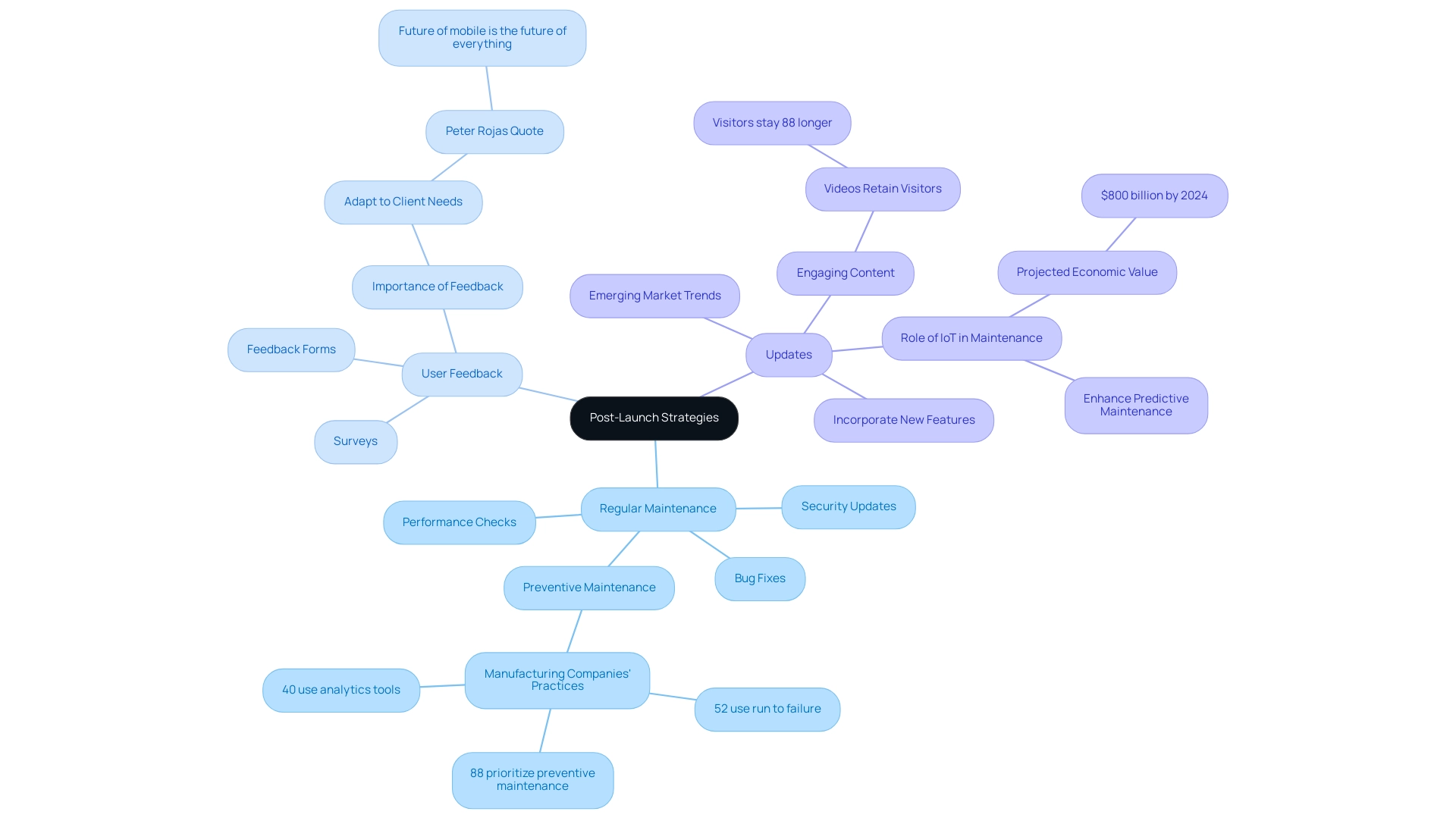
Conclusion
Understanding the intricacies of web applications is pivotal in today’s digital landscape. Key distinctions between web applications and traditional websites highlight the interactive functionalities, advanced technologies, and superior user engagement that web applications offer. By focusing on interactivity, functionality, and responsive design, developers can create applications that not only meet user expectations but also enhance overall business outcomes.
The journey of developing a successful web application begins with careful ideation and thorough market research. Identifying user needs, analyzing competitors, and gathering feedback are essential steps that ensure the application addresses real-world challenges effectively. Coupled with the right technology stack, encompassing both frontend and backend development, developers can build robust and scalable applications that cater to a diverse user base.
Testing and deployment are critical phases that cannot be overlooked. Incorporating various testing methodologies guarantees that applications function seamlessly and meet user requirements. Additionally, a well-planned deployment strategy, supported by monitoring tools, ensures that applications remain high-performing post-launch.
Finally, ongoing maintenance, updates, and user feedback play a vital role in the long-term success of web applications. By prioritizing these aspects, developers can adapt to evolving user needs and technological advancements, thereby enhancing user satisfaction and retention. In a competitive digital environment, these strategies collectively contribute to creating successful web applications that stand the test of time.





